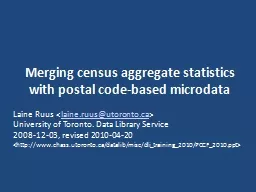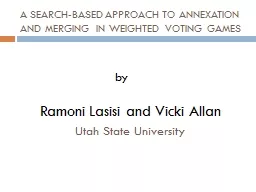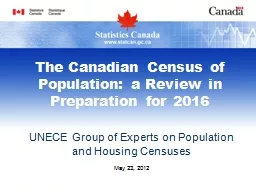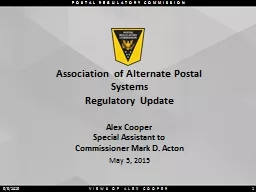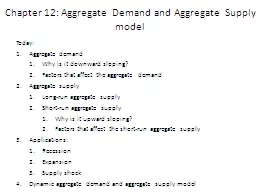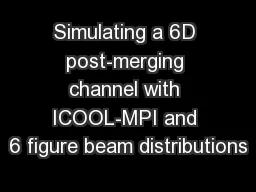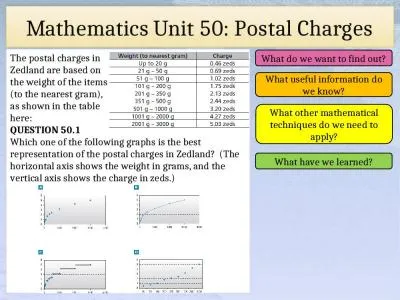PPT-Merging census aggregate statistics with postal code-based
Author : trish-goza | Published Date : 2016-09-02
Laine Ruus lt laineruusutorontoca gt University of Toronto Data Library Service 20081203 revised 20100420 lthttpwwwchassutorontocadatalibmiscdlitraining2010PCCF2010pptgt
Presentation Embed Code
Download Presentation
Download Presentation The PPT/PDF document "Merging census aggregate statistics with..." is the property of its rightful owner. Permission is granted to download and print the materials on this website for personal, non-commercial use only, and to display it on your personal computer provided you do not modify the materials and that you retain all copyright notices contained in the materials. By downloading content from our website, you accept the terms of this agreement.
Merging census aggregate statistics with postal code-based: Transcript
Download Rules Of Document
"Merging census aggregate statistics with postal code-based"The content belongs to its owner. You may download and print it for personal use, without modification, and keep all copyright notices. By downloading, you agree to these terms.
Related Documents

